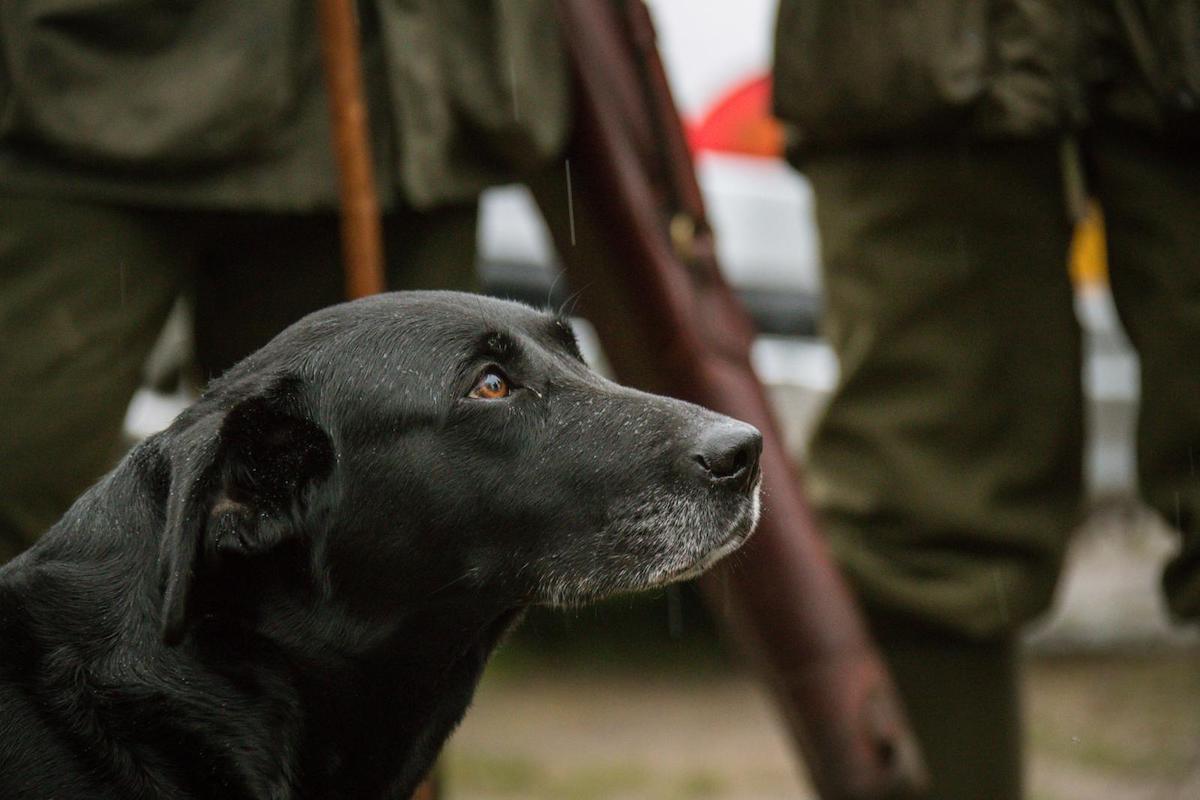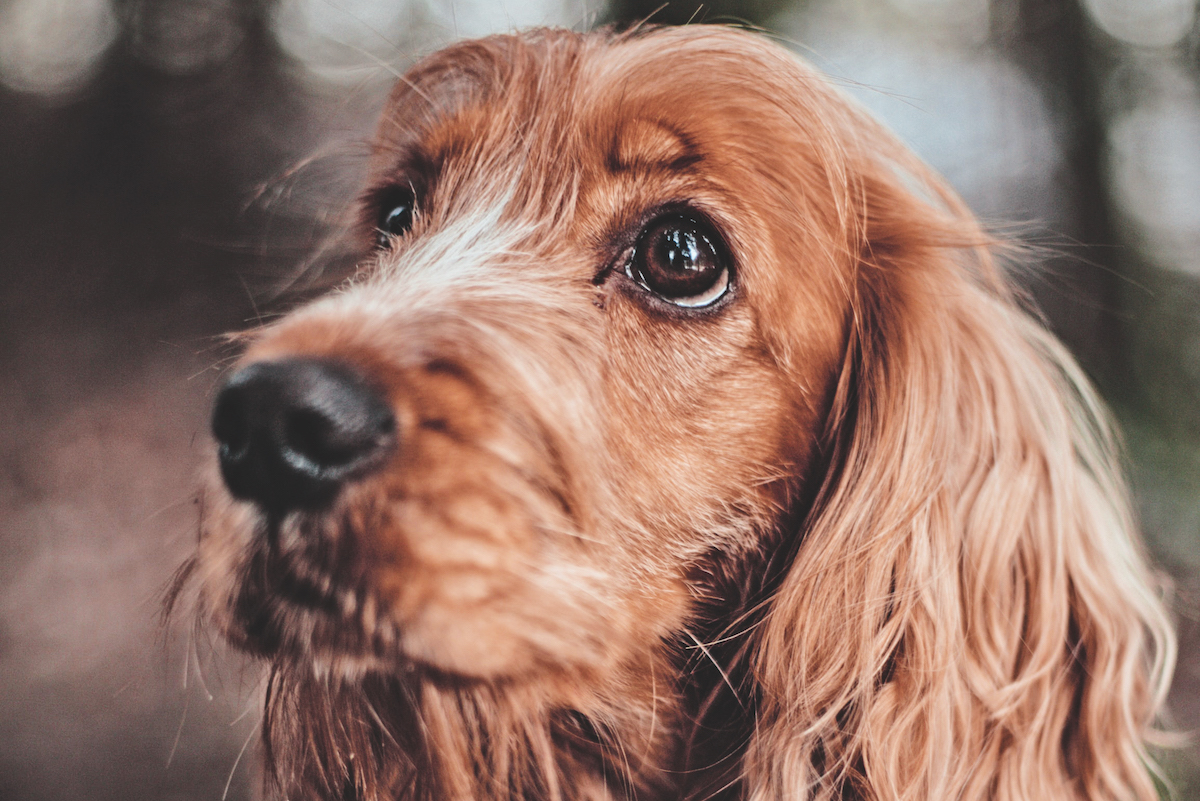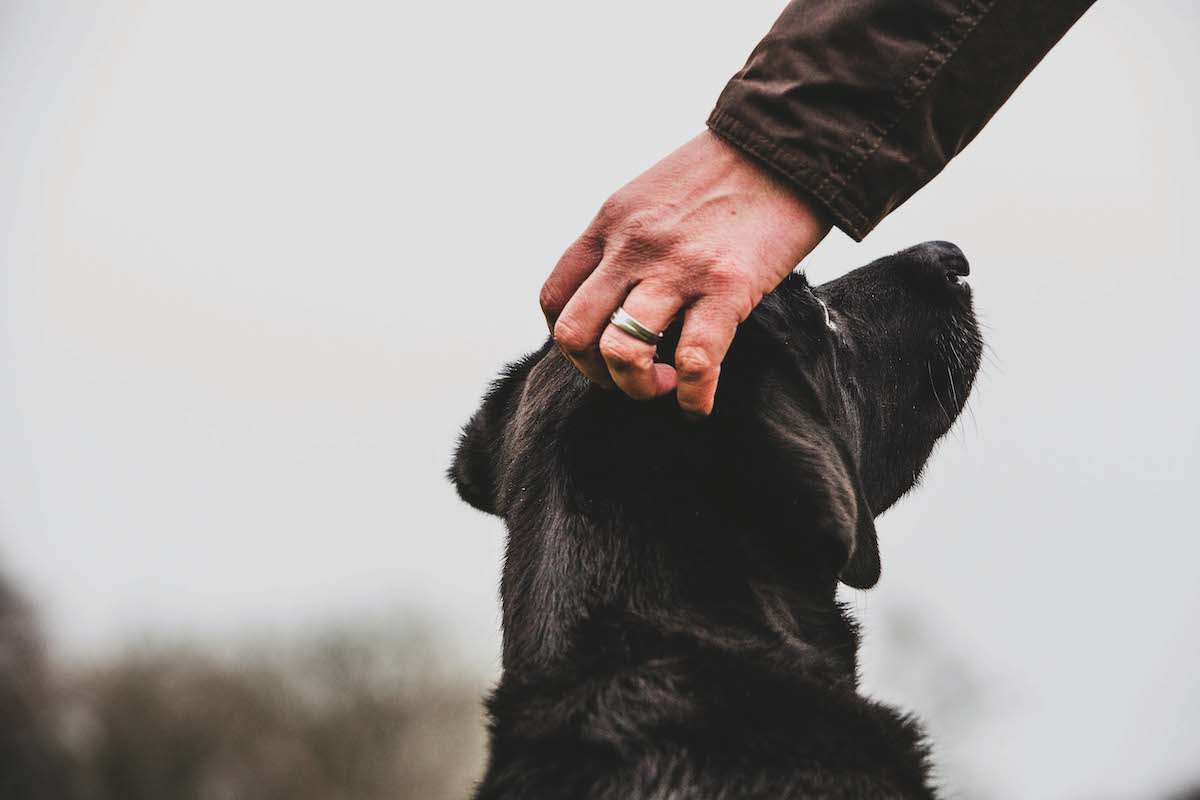Cataracts in dogs: causes of cloudiness
Have you noticed a difference in your dog's eyes recently that concerns you? Vet Tony Buckwell advises a reader.

As dogs age, their eyes may become cloudy
Cataracts in dogs
Q: My nine year old dog’s eyes are starting to look cloudy. What would be causing this? What the the signs of cataracts in dogs? (You might also like to read how to look after an older dog suffering from deafness.).)

The Labrador on the left has cataract, an opaque lens and a dilated pupil. The black Labrador on the right has light reflecting off the lens with a constricted pupil
Cloudy eyes in dogs
A: There are three parts of the eye that can be affected by cloudiness; the cornea (the clear outermost layer at the front of the eye), the fluid in the anterior chamber of the eye (immediately behind the cornea) and opacity of the lens.
The most common reasons for the cornea to be clouded are infection, inflammation or scarring. However, it can also be a sign of glaucoma which, if untreated, can cause permanent damage.
The anterior chamber of the eye can become cloudy if there is an accumulation of some material such as lipids, fats or white blood cells. These in turn can be an indication of some more serious underlying condition elsewhere in the body.
If the lens becomes cloudy this could either be due to cataracts or, more commonly, a normal ageing process. Despite the fact that the lens remains the same size as an animal gets older, cells inside the lens continue to divide and multiply. This means more cells have to be accommodated in the same lens volume and the lens, as a consequence, becomes less transparent as an animal matures into old age. This process, termed nuclear sclerosis, causes no apparent visual defect.
As a cloudy appearance to the eyes can either represent a normal ageing process or some more serious problem, it would be best to have a vet examine your dog’s eyes.

Are you worried about your dog’s eyesight?
Does my Labrador have cataracts?
Q: I have an elderly but fit Labrador and I am a bit concerned that he may be going blind. The pupils of his eyes are quite blue, which is different from before. He seems to get about okay but I realise that some blind dogs can use their nose very well! Do you think he has cataracts?
A: In a word, no!
- The lens is the transparent structure that sits in the middle of the eye and focuses light onto the retina at the back of the eye.
- The retina is composed of light sensitive cells, which transmit down the optic nerve to the brain.
- Cataract occurs when the lens becomes cloudy and opaque. As a result, no light is able to reach the retina and blindness occurs.
- Affected dogs always have a wide-open pupil as the brain does its best to let as much light in as possible.What you are seeing in your old dog is different. In young animals, the fibres in the lens are arranged in straight lines (like Polaroid sunglasses) so you can see through them. In older individuals, the fibres age and become wavy (like mirrored sunglasses).As a result, you see a bluish reflection of light off the wavy fibres, making you think about cataract.
- He is in fact seeing fine. The condition is called nuclear sclerosis and is quite common. (It is also why most of you over 45 years old will be wearing glasses to read this!)
This article was originally published in 2014 and has been updated.








